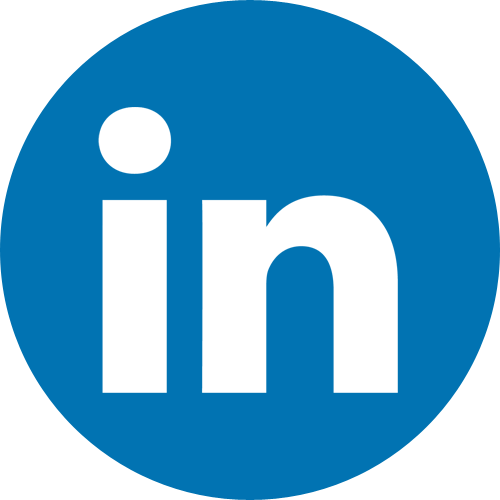Vendor relations have undergone significant changes since Henry Elliott and Company started 31 years ago. In our early years, the focus was equally on direct hire and contract placement. As we evolved, we quickly made contract temporary placement for staff augmentation our primary focus and also began to incorporate systems and project management to meet our customers’ technical resource needs.
Now, our holistic suite of services and the way we approach every engagement reflect an important takeaway from the past three decades in business — vendor relations are far from just transactional; they are partnerships built on strategic alignment, mutual growth, and long-term value.
In this post, I elaborate on this perspective as it may be of interest to other business leaders who grapple with the best approach to vendor management.
The Evolution of Vendor to Strategic Partners
As I noted above, our offerings were initially straightforward, but as time passed and client needs became more complex, we expanded our services to include systems integration and project management. We realized we had to offer more than just being a vendor based on price points. This was our first major shift towards strategic alignment with our clients, making us a long-term partner that brings specialized and value-added services.
For our professional services customers, we made the assumption that they became our partners because we could fill a role bigger than their current needs. By seeing beyond the immediate “ask,” we were able to help them win new projects and provide solutions for their internal IT challenges, making Henry Elliott Company an integral feature of their success. When it came to our other customers — such as software vendors, medical providers, insurance companies, and laboratories — we focused on how we could offer the right technology and expertise to support the IT solutions they needed for their internal and external customers.
Embracing a Client-Centric Approach
When clients speak about their business challenges, take the time to understand what they are saying and how you can be part of the solution. That’s a message I have tried to get across to our many business development, staffing and technical consultants — and I venture to say it has paid off. When you do succeed, clients will always give you an opportunity to assist again.
Our specialization in InterSystems technology, in particular, demonstrated we were committed to solutions rather than just staffing any need. This client-centricity coupled with our technical expertise has been pivotal in crafting tailored IT solutions for our clients. When it comes to technology, one size does not fit all, and we operate accordingly.
Collaboration and Mutual Growth
True collaboration is a two-way street. We found that clients valuing our specialization and long-term approach were those we wanted to collaborate with for mutual growth. Such relationships go beyond a mere client-vendor dynamic; they evolve into business relationships and often friendships.
Over time we focused on customers that viewed us as value add. They realized their internal staff didn’t have the bandwidth to find highly skilled resources. And they knew we were adding to, rather than competing with. their internal human resources recruiter or business development team. With this approach we never felt like a vendor, selected for price but a true partner and even friend.
Complimentary Partnerships with InterSystems
Our relationship with InterSystems adds another layer of value to our client engagements. By aligning ourselves closely with them, we’ve been able to create a symbiotic relationship that benefits all parties involved.
This has been especially relevant in large-scale, long-term projects such as those with the Department of Veterans Affairs (VA). The opportunity to support the VA as well as large medical providers, laboratories, medical software companies both nationally and internationally made the country and world a smaller and integrated place. These complimentary partnerships offer a blend of resource optimization and specialized skill sets, making the partnerships truly meaningful and effective.
The Importance of Effective Communication
Let’s not underestimate the power of communication in building strong, sustainable partnerships. Our regular presence at tradeshows and industry conferences has allowed us to maintain open channels of communication with our clients. Good communication forms the basis of trust building, which in turn leads to customer satisfaction and long-term client engagement. Seeing clients at tradeshows and conferences solidified our relationships. We need them and they need us equally. For all the benefits of online meetings, we do need to see each other in person, too, from time to time.
Balancing Multiple Stakeholder Relationships
Vendor relationships are not unilateral; they often involve multiple vendors and stakeholders. In such ecosystems, cross-collaboration between vendors becomes essential for the overall success of a project. This ensures that no single entity has disproportionate influence or responsibility, thereby maintaining a balanced, harmonious relationship.
Relying too much on one customer or vendor is unhealthy and causes imbalance. We are part of many projects where multiple vendors are supporting the same customer. It would be a mistake, however, to view this model as a competitive opportunity. Rather, we actively look to form relationships with the other companies. There is always enough business for your company if you have a long-term approach and work on developing new customers and expanding existing customers each day.
Continual Improvement through Feedback Loops
We also understand the need for continuous improvement and adaptability. Open feedback loops with our clients and partners help us refine our services and approach. Problem-solving and proactive support become easier when there is ongoing communication, which leads to higher quality assurance and ultimately, greater customer retention.
Conclusion: ROI and the Path to Mutual Success
In summary, effective vendor relations should be viewed through the lens of return on investment (ROI), not just in monetary terms but also in value-added services, problem-solving capabilities, and long-term engagement. It’s about achieving a win-win scenario through strategic partnerships, effective vendor management, and a commitment to mutual growth.
My advice to customers is look to the vendors that focus on specific needs within your department, look to see if your vendor has many long-term employees or those skilled in the area where you need assistance. Don’t select on price alone, but expertise. If the pricing is high, common ground can often be established. It’s challenging to find the right partner both for the client and vendor but when you do, work to keep that relationship strong, as both entities will benefit when both invest in each other’s success.
Contact Henry Elliott and Company
With a focus on client relationship management and a commitment to continually improving our offerings, Henry Elliott and Company aims to be more than just a vendor. We strive to be strategic partners who bring long-term value, customer-centric solutions, and mutual success to all our relationships. Contact us today to start a conversation.
Keep reading:
How to Overcome the IT Talent Shortage and Thrive in a Tight Job Market


